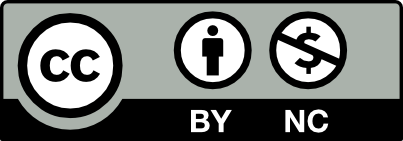Enhancing Photoconversion Efficiency by Optimization of Electron/Hole Transport Interlayers in Antimony Sulfide Solar Cell using SCAPS-1D Simulation.
DOI:
https://doi.org/10.51646/jsesd.v13i1.175Keywords:
Absorption layer, Efficiency, Solar Cells, Sb2S3, Sb2Se3, Photoconversion, optimization, SCAPS-1D.Abstract
Enhancing photoconversion efficiency in a solar cell with the composition "glass/Mo/CUSbS3/ Sb2S3/CdS/i:ZnO/AL:ZnO" by varying the thickness of the absorption layer (Sb2S3) and adding a secondary absorption layer was performed. The thickness of the original absorption layer (Sb2S3) was gradually increased from (1 µm) to (3.5 µm). The best efficiency (23.14%) and filling factor (87.52%) were achieved with an absorption layer thickness of 3.5 µm. This indicates that a thicker absorption layer can enhance efficiency. A secondary absorption layer was introduced between the original absorption layer and the reflection layer. Several materials were considered for this secondary absorption layer, including MAPbI3, Sb2Se3, CZTS, and CZTSe. The best-performing secondary absorption layer was found to be Sb2Se3. The solar cell structure, after combining it with the best reflection layer (CUSbS3) and the optimized thickness for the original absorption layer (3.5 µm), was established as "glass/Mo/CUSbS3/Sb2Se3/Sb2S3/CdS/i:ZnO/Al:ZnO". The optimized solar cell configuration yielded the best conversion efficiency (27.01%) and a high filling factor (85.12%).
These results highlight the significance of layer thickness and the addition of secondary absorption layers in enhancing the solar cell efficiency. The final configuration demonstrates substantial improvements in efficiency and suggests that thoughtful design and material choices can lead to more efficient photovoltaic devices.
Downloads
Metrics
References
M. Green, E. Dunlop, J. Hohl‐Ebinger, M. Yoshita, N. Kopidakis, and X. Hao, "Solar cell efficiency tables (version 57)". Progress in photovoltaics: research and applications, 29(1), 3-15, 2021. doi.org/10.1002/pip.3371.
S. J. Moon, Y. Itzhaik, J. H. Yum, S. M. Zakeeruddin, G. Hodes, and M. Grätzel, "Sb2S3-based mesoscopic solar cell using an organic hole conductor". The Journal of Physical Chemistry Letters, 1(10), pp.1524-1527, 2010. doi.org/10.1021/jz100308q
S. J. Sung, E. K. Gil, S. J. Lee, Y. C. Choi, K. J. Yang, J. K. Kang, ... and D. H. Kim, "Systematic control of nanostructured interfaces of planar Sb2S3 solar cells by simple spin-coating process and its effect on photovoltaic properties". Journal of industrial and engineering chemistry, 56, pp. 196-202, 2017. DOI: 10.1016/j.jiec.2017.07.012
V. Vinayakumar, S. Shaji, D. Avellaneda, T. D. Roy, G. A. Castillo, J. A. A. Martinez, and B. Krishnan, "CuSbS2 thin films by rapid thermal processing of Sb2S3-Cu stack layers for photovoltaic application". Solar Energy Materials and Solar Cells, 164, pp.19-27, 2017. DOI:10.1016/J.SOLMAT.2017.02.005.
[5] M. Ishaq, S. Chen, U. Farooq, M. Azam, H. Deng, Z. H. Su, ... and G. X. Liang, "High open‐circuit voltage in full‐inorganic Sb2S3 solar cell via modified Zn‐doped TiO2 electron transport layer", Solar RRL, 4(12), pp.2000551, 2020. DOI:10.1002/solr.202000551.
Y. Xiao, H. Wang, and & H. Kuang, "Numerical simulation and performance optimization of Sb2S3 solar cell with a hole transport layer", Optical Materials, 108, pp.110414, 2020. DOI:10.1016/j.optmat.2020.110414.
G. Ma, C. Wang, Q. Zheng, M. Jin, S. Cheng, Y. Lai, ... and H. Jia, "Ti doped Sb2S3 thin film for improved performance of inorganic-organic hybrid solar cells", Materials Letters, 260, pp.126879, 2020. DOI:10.1016/j.matlet.2019.126879.
Z. Chen, and G. Chen, "The effect of absorber thickness on the planar Sb2S3 thin film solar cell: Trade-off between light absorption and charge separation", Solar Energy, 201, pp.323-329, 2020. DOI:10.1016/j.solener.2020.02.074.
J. Chen, R. Liu, L. Zhu, W. Chen, C. Dong, Z. Wan, ... and M. Wang, "Sb2S3-based bulk/nano planar heterojunction film solar cells with graphene/polymer composite layer as hole extracting interface", Materials Letters, 300, pp. 130190, 2021. DOI:10.1016/j.matlet.2021.130190.
H. J. El-Khozondar, R. J. El-Khozondar, R. Al Afif, and C. Pfeifer, "Modified solar cells with antireflection coatings", International Journal of Thermofluids, 11, pp. 100103, 2021. doi.org/10.1016/j.ijft.2021.100103.
J. Li, L. Xiong, X. Hu, J. Liang, C. Chen, F. Ye, ... and G. Fang, "Manipulating the morphology of CdS/ Sb2S3 heterojunction using a Mg-doped tin oxide buffer layer for highly efficient solar cells", Journal of Energy Chemistry, 66, pp.374-381, 2022. DOI:10.1016/j.jechem.2021.08.029.
H. J. El-Khozondar, and M. M. Shabat, "Investigating the Performance of Graded Index Nanocomposite-Perovskite Solar Cells", Applied Solar Energy, 59(5), pp.587-594, 2023. doi.org/10.3103/S0003701X23600893.
M. H. Oglah, W. I. Mahmood, and N. B. Adday, "Simulation analysis for the efficiency enhancement of Sb2S3 solar cell using SCAPS-1D". Computer Methods in Materials Science, 23(4), pp.19-29, 2023. DOI: 10.7494/cmms.2023.4.0817.
M. Saadat, O. Amiri, and P. H. Mahmood, "Analysis and performance assessment of CuSbS2-based thin-film solar cells with different buffer layers", The European Physical Journal Plus, 137(5), pp.582, 2022. DOI:10.1140/epjp/s13360-022-02804-6.
O. A. Jaramillo-Quintero, A. Baron-Jaimes, R. A. Miranda-Gamboa, and M. E. Rincon, "Cadmium-free ZnS interfacial layer for hydrothermally processed Sb2S3 solar cells", Solar Energy, 224, pp. 697-702, 2021. doi.org/10.1016/j.solener.2021.06.037.
BE. McCandless, SS. Hegedus, "Influence of CdS layer on thin film CdSlCdTe solar cell performance", Proceedings of the 22th IEEE Photovoltaic Specialists Conference, 1991, 967–972.
W. Eisele, A. Ennaoui, P. Schubert-Bischoff, M. Giersig, C. Pettenkofer, Krauser, "XPS, TEM and NRA investigations of Zn(Se,OH)/Zn(OH)2 films on Cu(In,Ga)(S,Se)2 substrates for highly efficient solar cells", Solar energy materials and solar cells, 7(1–2), 17–26, 2003. DOI:10.1016/S0927-0248(02)00104-6
B. Aleksandra, I. Djuris, and L. Yu Hang, "Optical Properties of ZnO Nanostructures", small, 2 (8-9), 944 – 961, 2006. DOI:10.1002/smll.200600134
M. Nguyen, K. Ernits, K.F. Tai, C.F. Ng, S.S. Pramana, W. A. Sasangka, S.K. Batabyal, T. Holopainen, D. Meissner, A. Neisser, L.H. Wong, "ZnS buffer layer for Cu2ZnSn(SSe)4 monograin layer solar cell", Solar Energy, Vol 111, pp.344–349, 2015. DOI:10.1016/j.solener.2014.11.006 .
P. Roy, and S. K. Srivastava, "Hydrothermal growth of CuS nanowires from Cu− dithiooxamide, a novel single-source precursor", Crystal Growth & Design, 6(8), 1921-1926, (2006). doi:/10.1155/2014/321571
M. M. S. Sanad, A. M. Elseman, M.M. Elsenety, M. M. Rashad, and B.A. Elsayed, "Facile synthesis of sulfide-based chalcogenide as hole-transporting materials for cost-effective efficient perovskite solar cells", Journal of Materials Science: Materials in Electronics, 30(7), pp.6868-6875, 2019. DOI:10.1007/s10854-019-01001-z.
A. H. Najim, and A.N. Saleh, "Study effect of window and BSF layers on the properties of the CZTS/CZTSe solar cell by SCAPS–1D", Tikrit Journal of Pure Science, 24(3), pp.77-83, 2019. DOI:10.25130/j.v24i3.820.
O. A. Jaramillo-Quintero, A. Baron-Jaimes, R.A. Miranda-Gamboa, and M. E. Rincon, "Cadmium-free ZnS interfacial layer for hydrothermally processed Sb2S3 solar cells", Solar Energy, 224, 697-702. 2021. DOI:10.1016/j.solener.2021.06.037.
K. Li, S. Wang, C. Chen, R. Kondrotas, M. Hu, S. Lu, ... and J. Tang, "7.5% n–i–p Sb 2 Se 3 solar cells with CuSCN as a hole-transport layer", Journal of Materials Chemistry A, 7(16), 9665-9672, 2019. https://doi.org/10.1039/C9TA01773A.
X. Hu, J. Tao, S. Chen, J. Xue, and G. Weng,"Improving the efficiency of Sb2Se3 thin-film solar cells by post annealing treatment in vacuum condition". Solar Energy Materials and Solar Cells, 187, pp.170-175, 2018. DOI:10.1016/j.solmat.2018.08.006.
W. Li, J. Yang, Q. Jiang, Y. Luo, Y. Hou, S. Zhou, ... and Z. Zhou, "Electrochemical atomic layer deposition of Bi2S3/ Sb2S3 quantum dots co-sensitized TiO2 nanorods solar cells", Journal of Power Sources, 307, pp.690-696, 2016. DOI:10.1016/j.jpowsour.2016.01.035 .
A. S. Brown, and M. A. Green, "Impurity photovoltaic effect: Fundamental energy conversion efficiency limits", Journal of Applied Physics, 92(3), 1329-1336, (2002). doi: 10.1063/1.1492016.
M. M. S. Sanad, A. M. Elseman, M. M. Elsenety, M. M. Rashad, and B.A. Elsayed, "Facile synthesis of sulfide-based chalcogenide as hole-transporting materials for cost-effective efficient perovskite solar cells", Journal of Materials Science: Materials in Electronics, 30(7), 6868-6875, 2019. DOI:10.1007/s10854-019-01001-z.
F. Z. Boutebakh,, D. Batibay, M. S. Aida, Y. S. Ocak, and N. Attaf. "Thermal sulfurization effect on sprayed CZTS thin filmsproperties and CZTS/CdS solar cells performances." Materials Research Express 5, no. 1, pp.015511, 2018. DOI 10.1088/2053-1591/aaa6e5
S. Ito, K. Tsujimoto, D. C. Nguyen, K. Manabe, and H. Nishino, "Doping effects in Sb2S3 absorber for full-inorganic printed solar cells with 5.7% conversion efficiency", International journal of hydrogen energy, 38(36), pp.16749-16754, 2013. DOI:10.1016/j.ijhydene.2013.02.069.
C. A. Puvaneswaran, I. H. Mohammad, A. Nowshad, "Performance analysis of copper–indium–gallium–diselenide (CIGS) solar cells with various buffer layers by SCAPS", Current Applied Physics, 10(13), S387–S391, 2010. DOI:10.1016/j.cap.2010.02.018.
S. Q. Hussain, W. K. Oh, S. Ahn, A. H. T. Le, S. Kim, Y. Lee, and J. Yi, "RF magnetron sputtered indium tin oxide films with high transmittance and work function for a-Si: H/c-Si heterojunction solar cells", Vacuum, 101, 18-21, 2014. doi.org/10.1016/j.vacuum.2013.07.004.

Downloads
Published
How to Cite
Issue
Section
License
Copyright (c) 2024 Solar Energy and Sustainable Development Journal

This work is licensed under a Creative Commons Attribution-NonCommercial 4.0 International License.













